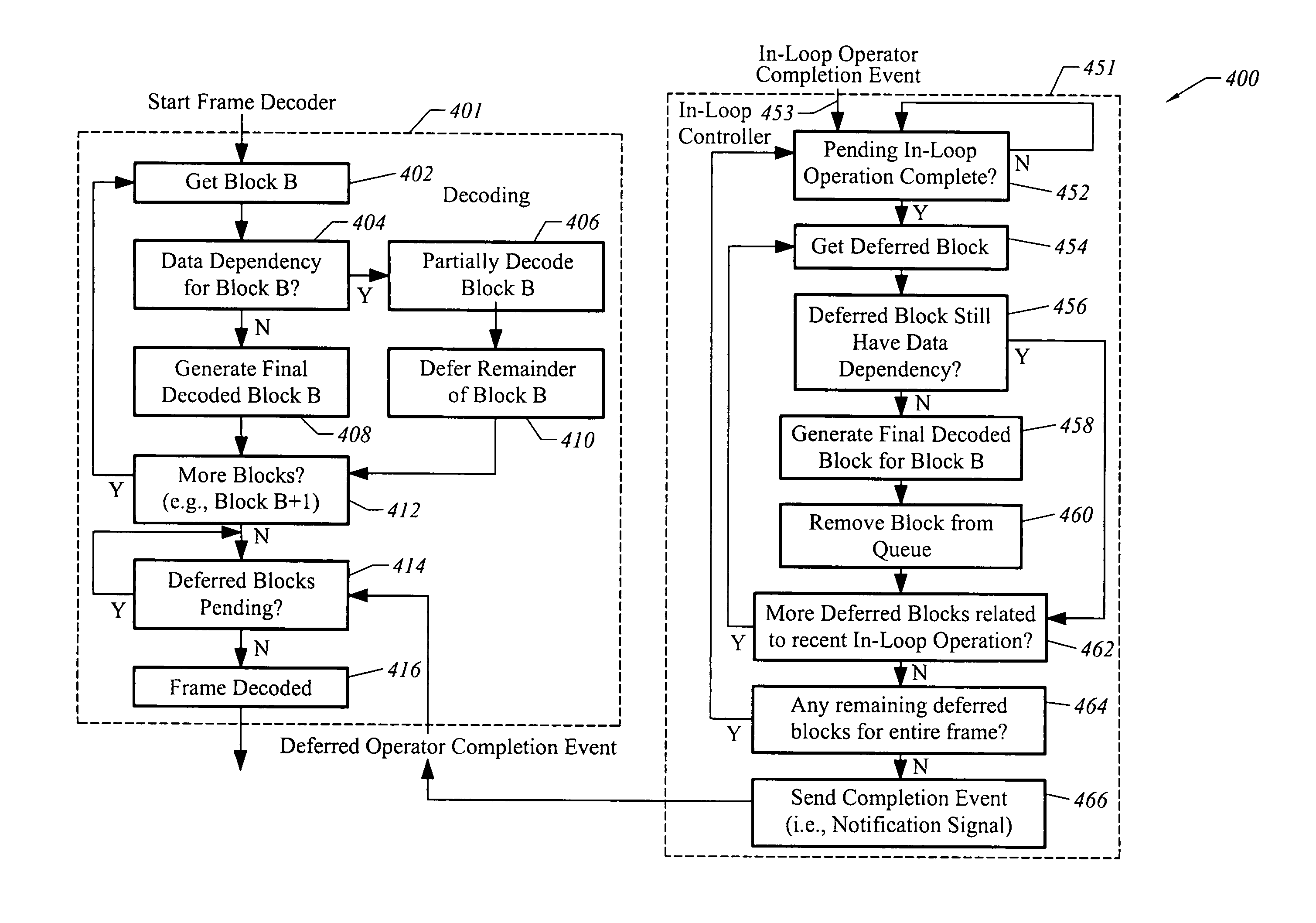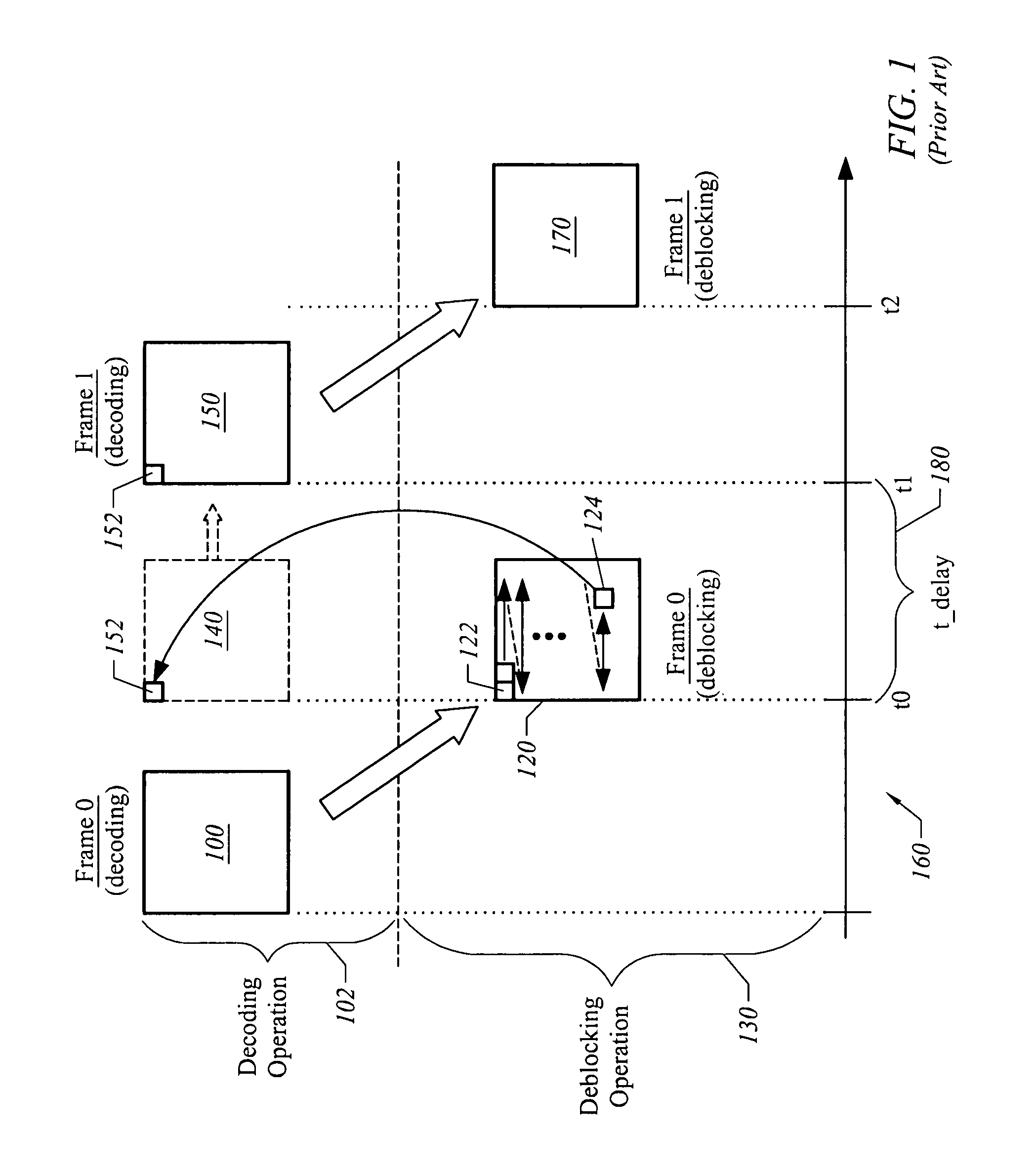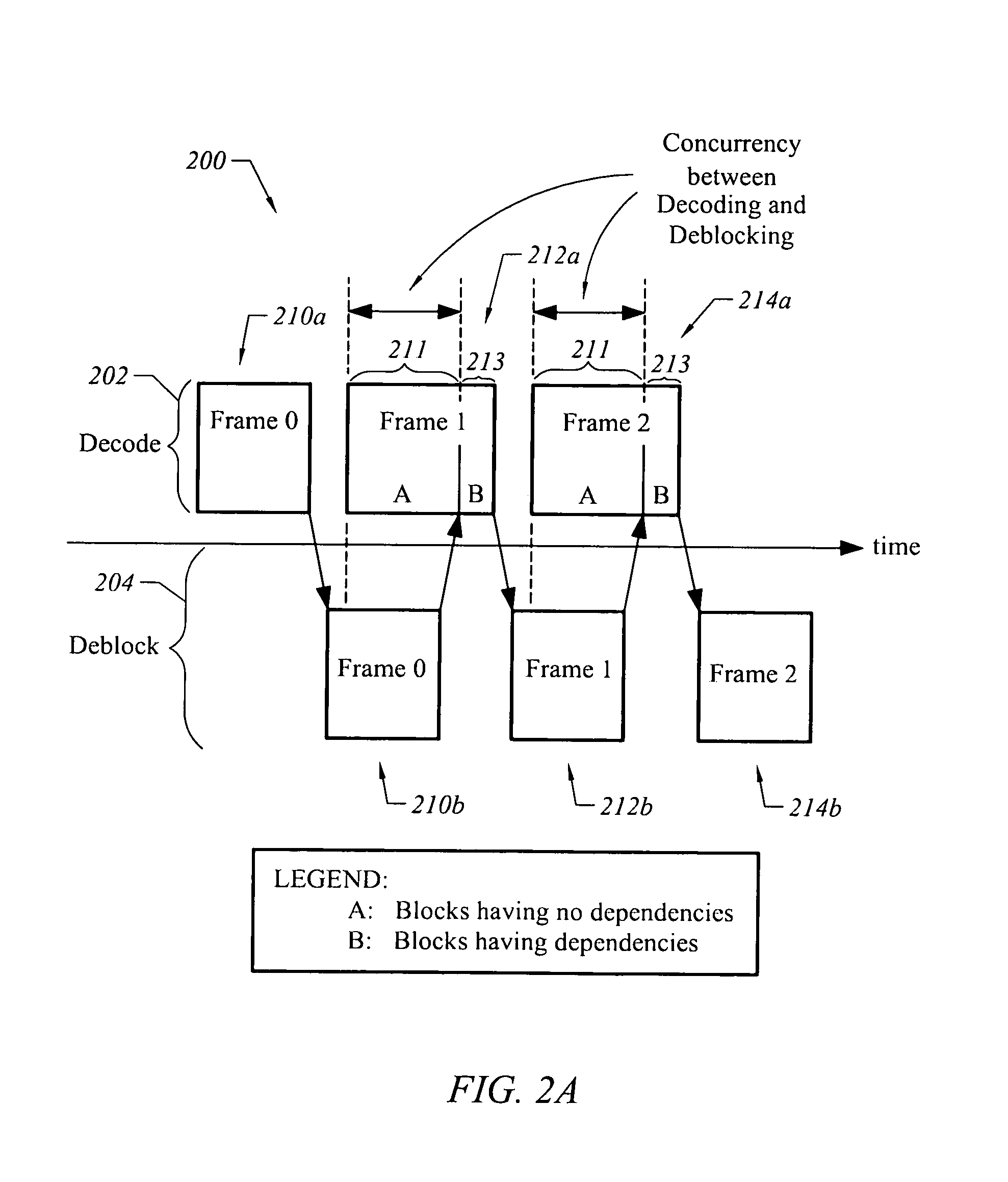Avoiding stalls to accelerate decoding pixel data depending on in-loop operations
a technology of in-loop operations and pixel data, which is applied in the direction of color televisions with bandwidth reduction, instruments, television systems, etc., can solve the problems of reducing the rate at which frames of video can be generated, most conventional video coding standards have either no effective techniques or are not optimal, so as to facilitate compliance
- Summary
- Abstract
- Description
- Claims
- Application Information
AI Technical Summary
Benefits of technology
Problems solved by technology
Method used
Image
Examples
Embodiment Construction
[0021]FIG. 2A is a block diagram depicting the concurrency of decoding and deblocking video frames, according to at least one specific embodiment of the invention. In particular, diagram 200 shows a decoder 202 decoding frames, such as frame (“0”) 210a, frame (“1”) 212a, and frame (“2”) 214a. A deblocking operation 204 then deblocks each decoded frame to form deblocked frames, such as frame (“0”) 210b, frame (“1”) 212b, and frame (“2”) 214b. As shown, decoder 202 operates to decode blocks (“A”) 211 while deblocking operation 204 deblocks previous frames. Blocks (“A”) 211 do not depend on previous blocks to be decoded, and therefore, they can be decoded concurrently with deblocking operation 204. Blocks (“B”) 213, however, do depend on reference blocks of other frames for decoding. According to the various embodiments of the invention, decoder defers decoding of blocks (“B”) 213 until decoded video data is available for the reference blocks. The decode time for blocks (“A”) 211 can a...
PUM
 Login to View More
Login to View More Abstract
Description
Claims
Application Information
 Login to View More
Login to View More - R&D
- Intellectual Property
- Life Sciences
- Materials
- Tech Scout
- Unparalleled Data Quality
- Higher Quality Content
- 60% Fewer Hallucinations
Browse by: Latest US Patents, China's latest patents, Technical Efficacy Thesaurus, Application Domain, Technology Topic, Popular Technical Reports.
© 2025 PatSnap. All rights reserved.Legal|Privacy policy|Modern Slavery Act Transparency Statement|Sitemap|About US| Contact US: help@patsnap.com



